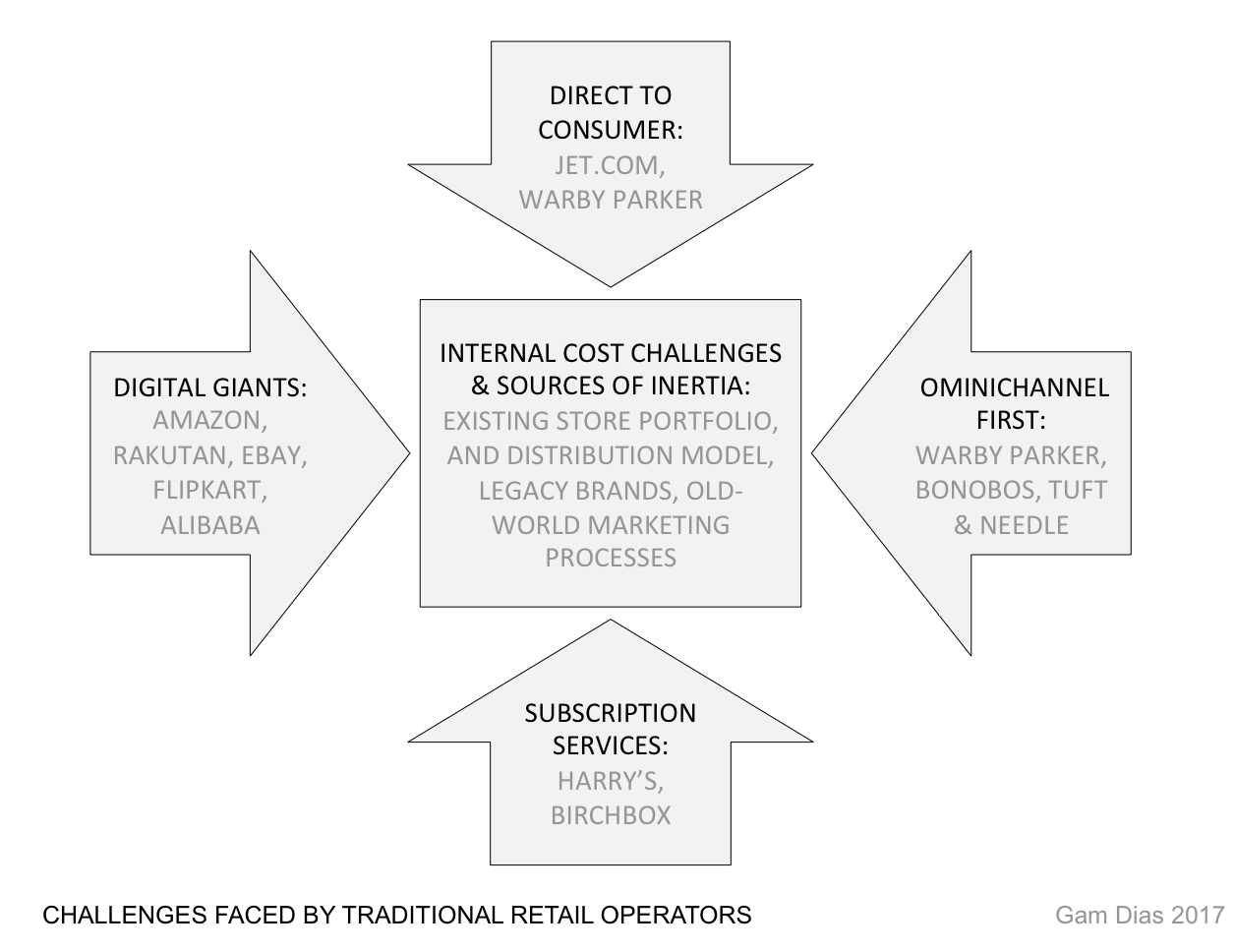Sears, Eddie Lampert and the Wolves of Yellowstone
Sears is a dying retailer, with a business model that is unable to adapt and compete in the new digital-first world. As it sells off its real estate, retail nameplates and product brands, it clears the way for a new breed. LIke the wolves of Yellowstone, Eddie Lampert is doing the industry a favor. (March 2017)
In 1995 fourteen wolves were reintroduced in Yellowstone Park. The wolves' hunting patterns rapidly decreased the population of deer and forced them to steer clear open space. Without the heavy grazing, the vegetation returned and the insects and berries brought back other species of birds and mammals that had been long absent. The root systems of the aspens and willows decreased the erosion of the river banks and even the rivers flowed differently. The entire ecosystem of Yellowstone was altered by the introduction of just fourteen apex predators.
Old Retailers Not Suited to the New Environment
Today in 2017 the retail landscape is much like Yellowstone had become without wolves. The century-old US retail ecosystem, stalwarts like Macy’s Sears, Roebuck and Co. and relied on large store formats at the center of areas of population, carrying a broad inventory of products. As the country sprawled into suburbs, shopping malls sprang up. Today those malls are dying and the flagship urban locations struggle to get foot traffic.
The problem for the remaining centenarian retailers is that their entire business was optimized around serving physical stores. In today’s retail environment this old guard is incorrectly invested. Too much real-estate, too many store staff, a huge value of inventory dispersed to physical stores to maintain local availability, and too much cost tied up in supply chains. Compounding this problem, these retailers continue to spend on brand advertising, promotional campaigns and discounting just to herd customers to their locations.
New Online Giants and Innovative Retail Startups
Today they compete head-on against a cohort of online giants like Amazon, eBay, Jet, Alibaba and Rakuten, and are being nibbled at by thousands of small stores on cheap ecommerce platforms and new niche models of retailing.

Introduction of the Wolves
If, a decade ago you had the foresight to see this happening what would you do? If you were already in retail like Walmart and BestBuy you would invest heavily in new digital models. If you were not, would you seek out an old-guard retailer whose value was tied-up in the dying business model. When Eddie Lampert looked at Sears he saw a fortune in real-estate and tremendous equity in retail brandnames like Orchard Supply and Land's End and product brands like Craftsman and Kenmore. Yet the vertically integrated, multi-brand business model was going to be unsustainable in the brave new world that was clearly coming.
Making Way for the New
Sears is not having a happy time as it fights its demise. However, like the willows and aspens in Yellowstone, we see the retail model being fundamentally changed by companies like Warby Parker, Zulily, ModCloth, Etsy, and Birchbox. Their models began without the crippling overhead of maintaining huge physical store networks. Instead customers shop online and are fulfilled directly out of the distribution center. They have built engagement and conversion models that bricks and mortar cannot touch. Having established themselves,the online pure plays are now investing in physical stores to complement their optimized online offerings.
Read All About It
- Sears and Its Hedge Fund Owner, in Slow Decline Together NYTimes (March 2017)
Oldest US Retailing Companies In Business The Balance (September 2016)- Dying shopping malls are wreaking havoc on suburban America Business Insider (Mar 2017)
- There really are too many stores. Just ask the retailers. Washington Post (April 2016)
- The Biggest Problem Facing Retailers? Too Much Real Estate MadMobile (October 2016)
Sears is on the brink of catastrophe as store closures loom and top execs flee the company Business Insider (December 2016)- Inside Sears' death spiral: How an iconic American brand has been driven to the edge of bankruptcy Business Insider (January 2017)
- How Subscription Commerce is Transforming Retail My Total Retail (April 2016)
Amazon Wants Cheerios, Oreos and Other Brands to Bypass Wal-Mart Bloomberg (March 2017)
Jet.com’s New York Store Isn’t The New Front Line In The Online Grocery War Fast Company (April 2017)
The Wolves of Yellowstone Script from the Video
In 1995 fourteen wolves were reintroduced in Yellowstone National Park
But no-one expected the miracle that the wolves would bring
It all started with the wolves hunting deer
Which led the population of deer to rapidly decrease
The wolves presence also made the deer avoid areas where they were an easy prey
The deers’ absence in these areas meant plants could grow again
Beautiful aspen and willow trees began to flourish
That’s when things really started to happen
With the trees and bushes came more berries and bugs
Thanks to that various bird species returned to the national park
But the increased tree population also attracted another species
The beaver, previously extinct in the region was back
Their dams then attracted otters, muskrats and various reptiles
The wolves also killed coyotes
As a result, the mice and rabbit population grew
This attracted red foxes, weasels, badgers and hawks to the park
Even the population of bald eagles rose
But here’s where it gets really interesting
The wolves even changed the rivers
With the better balance between predator and prey
Came the possibility for other species to thrive
The increased vegetation growth made erosion decrease
And river banks were stabilized
Channels narrowed
More pools formed
And the rivers stayed more fixed in their course
So the wolves did not only give Yellowstone’s huge eco system new balance
They also changed the park’s physical geography